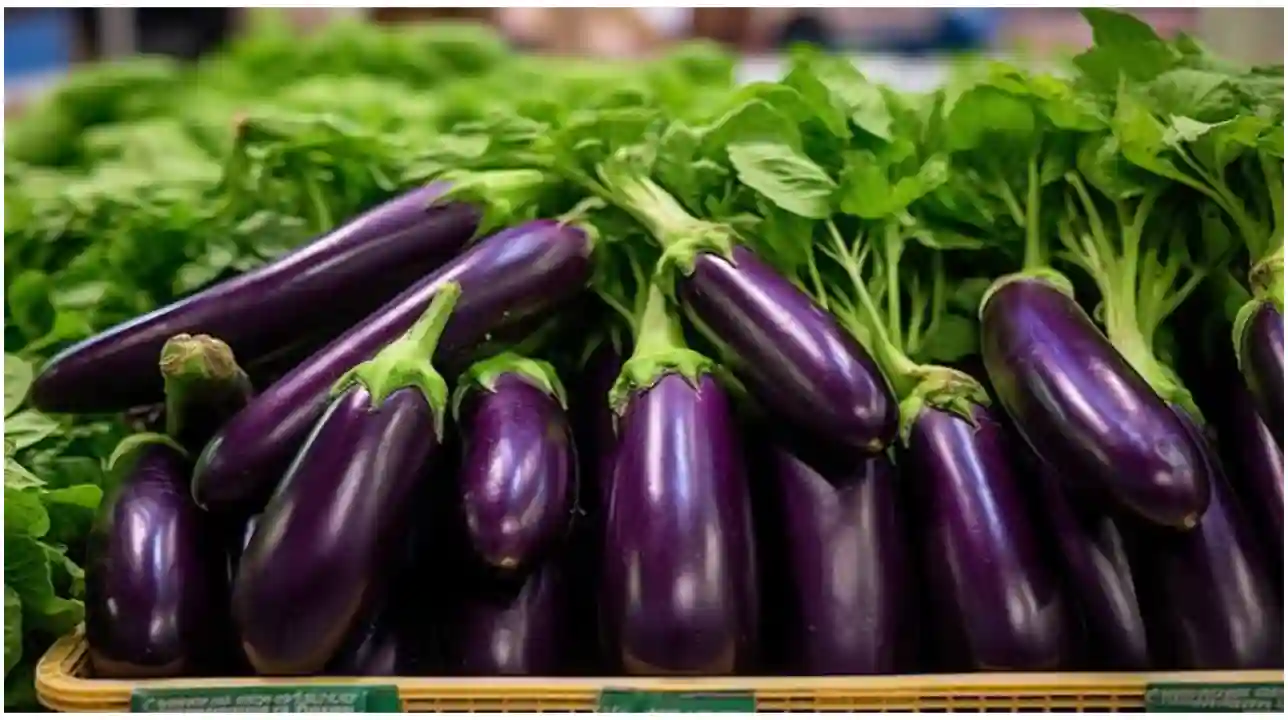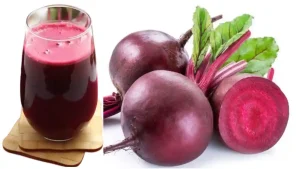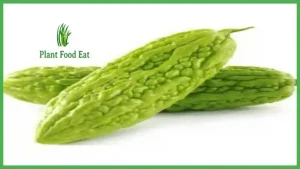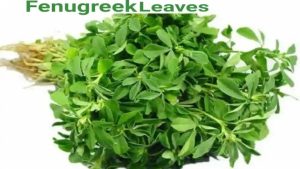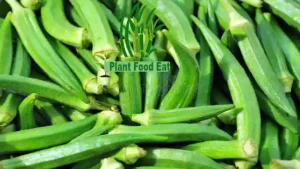Brinjal is a fruit or vegetable? This question often confuses people. It is known as eggplant in english. Scientifically, it is actually a fruit because it develops from the flower of a plant and contains seeds. However, in our daily lives, it is primarily used as a vegetable. The brinjal plant belongs to the Solanaceae family and its scientific name is Solanum melongena.
Brinjal comes in many shapes, colors, and varieties. In India, it is found in round, elongated, purple, green, and striped forms. It is considered one of the most common vegetables in the kitchen and is also known as the “King of Vegetables.”
Nutritionally, brinjal is rich in fiber, antioxidants, vitamins, and minerals. It improves digestion, is beneficial for the heart, and helps balance cholesterol in the body.
Thus, despite being a fruit scientifically. Brinjal is practically classified as a vegetable and has a very important place in the Indian thali.
Related:- Snake plant benefits
Brinjal is a fruit or vegetable
Brinjal is a fruit or vegetable, nutritious and popular food item that people often consider a vegetable. In fact, it is botanically considered a fruit because it develops from the flower of a plant. It is primarily used for cooking and eating as a vegetable. There are many varieties of eggplant, varying in size, color, and flavor. It is considered light to digest and beneficial for health.
It is rich in fiber, vitamins, minerals, and antioxidants. Which help protect the body from many diseases. In India, eggplant is especially used in making bharta, sabji, pakodas, and pickles. Therefore, brinjal or eggplant can be considered both a fruit and a vegetable.
Brinjal nutrients
Eggplant (Brinjal) is a nutrient-rich vegetable. It contains many essential vitamins, minerals, and nutrients that help maintain a healthy body. The main nutrients in eggplant are listed below:
Eggplant Nutrients (Brinjal Nutrients in Hindi)
- Fiber – Supports the digestive system.
- Protein – Helps strengthen muscles.
- Carbohydrate – Provides energy.
- Vitamin C – Boosts immunity.
- Vitamin K – Helps with blood clotting.
- Vitamin B6 – Essential for brain function.
- Folate – Useful in cell formation and development.
- Niacin – Good for the skin and nervous system.
- Magnesium – Strengthens bones and muscles.
- Calcium – Important for teeth and bones.
- Potassium – Maintains blood pressure.
- Phosphorus – For energy production and cell health.
- Iron – Helps in hemoglobin formation.
- Zinc – Useful for immunity and skin.
- Copper – Helps in blood circulation and enzyme function.
- Antioxidants – Protect cells from damage.
- Polyphenols – Helps in heart health and diabetes management.
Let’s know Brinjal is a fruit or vegetable
Brinjal is a food often mistaken for a vegetable, but botanically, it is actually a fruit. This is because eggplant grows from the flower of a plant and contains seeds, which are considered a fruit. However, in our cuisine and daily use, it’s cooked and eaten as a vegetable. Eggplant is used in a variety of dishes, such as bharta, bhurta, stir-fries, or curries.
Its tender texture and flavor make it unique. Interestingly, it holds the identity of both fruit and vegetable. Scientifically a fruit, but popularly known as a vegetable in the kitchen. This is its unique and secret identity.
Why brinjal known as fruit
Brinjal is generally considered a vegetable, but according to botany, it is actually a fruit. The reason is that a fruit is the part that develops from the ovary of a flower and bears seeds. Eggplant also undergoes fruiting from the ovary after flowering, and many seeds are found in it. On this basis, it is scientifically classified as a fruit.
The main reason for calling it a fruit.
- It contains seeds.
- It originates from the reproductive part of the plant.
- It develops directly from the flower.
Why brinjal known as vegetable
Brinjal (eggplant) is called a vegetable because it is often eaten cooked. Botanically, eggplant is a fruit, but based on culinary tradition and usage, it is classified as a vegetable.
The main reason for calling it a vegetable.
- Brinjal is mostly used for cooking.
- It enhances the flavor of food.
- It is considered a part of regular meals.
- The distinction between fruit and vegetable in the kitchen is based on culinary art, not scientific.
- For generations, brinjal has been adopted as a vegetable in every household.
- Therefore, scientifically, eggplant is a fruit, but based on culinary and traditional usage, it is considered a vegetable.
Brinjal is a fruit or vegetable uses
- Food Decoration
- Roasted Flavor
- Pickle Tradition
- Sambar Aroma
- Pakodas Served
- Medicinal Form
- Weight Balance
- Skin Beauty
- Hair Strength
- Folk Cuisine
- Vegetable Variety
- Vegetarian Delight
- Dal Sangam
- Festive Dishes
- Tandoori Dishes
- Rural Flavors
- Cough Controller
- Nutritional Wealth
- Hunger Satisfaction
- Delicacy
Brinjal plant specification
Brinjal plants are medium-sized, with soft, slightly hairy branches. Their leaves are broad, velvety, and dark green. The flowers are blue or purple, and the fruits are round, oblong, oval, or snake-like. The fruit can be dark purple, light green, white, striped, or mixed.
Known as meat of poor
Brinjal is a fruit or vegetable also known as “the meat of the poor” because it is rich in flavor and nutrition. And it is used in a variety of dishes. Its main forms include bharta, bhurta, bhaji, sambar, pakodas, pickles, and gravies.
Benefits of brinjal
Medicinally, it is considered a constipation reliever, heart-healthy, bile suppressant. And helpful in controlling obesity. Ayurveda describes it as a vata enhancer, so those with vata problems should consume it in limited quantities. Let’s know 10 benefits of brinjal.
Heart protector
The fiber and potassium found in brinjal regulate blood pressure. It helps keep arteries clean, reducing the risk of heart disease. Regular consumption balances cholesterol and improves heart function.
Improves digestion
The fiber in brinjal stimulates intestinal motility. Eating eggplant relieves constipation and cleanses the intestines. Being light and easily digestible, it maintains a balanced digestive system and reduces gas and indigestion.
Weight controller
Brinjal is a fruit or vegetable low in calories and rich in fiber. Consuming it keeps the stomach full for a long time, thereby controlling overeating. Eggplant proves to be an excellent and natural option for those seeking to lose weight.
Blood Pressure Balancer
The potassium and antioxidants present in brinjal help maintain normal blood pressure. It maintains arterial flexibility and balances sodium levels in the body. Regular consumption is especially beneficial for those with high blood pressure.
Brain Nourisher
Brinjal contains a compound called nasunin, which protects brain cells. It helps strengthen memory and reduce mental stress. Eating eggplant promotes brain health and keeps the nervous system active.
Diabetes Controller
The soluble fiber present in brinjal regulates blood sugar levels. It has a low glycemic index, making it beneficial for diabetics. Regular consumption helps maintain stable blood sugar levels.
Bone Strengthener
Brinjal contains calcium, phosphorus, and magnesium, which strengthen bones. It helps prevent bone loss and maintain joint health. Eating it is considered especially beneficial as we age.
Skin Protectant
The antioxidants and vitamins present in brinjal renew skin cells. Eating eggplant brightens the skin and prevents wrinkles. It also protects the skin from damage caused by free radicals.
Immunity Booster
Brinjal contains various minerals and vitamins that strengthen the body’s immune system. It protects against infections and reduces the effects of seasonal illnesses. Regular consumption increases the body’s immunity.
Liver Cleansing
Brinjal consumption cleanses the liver. It flushes out toxins and activates digestive juices. Also improved liver function balances bile secretion, maintaining a healthy digestive system.
How to make brinjal bharta recipe
Brinjal is used to make many delicious dishes. Below is a simple and popular recipe for brinjal bharta (baingan bharta) in its original form.
Ingredients:-
- 2 large eggplants (thoroughly washed)
- 2 medium onions (finely chopped)
- 3 tomatoes (crushed)
- 4-5 garlic cloves (crushed)
- 1-2 green chilies (chopped)
- Green coriander (for garnishing)
- Salt to taste
- Turmeric, red chili powder, coriander powder
- 2 tablespoons mustard oil or pure ghee
Method of Preparation:-
- First, wash the eggplant and roast it directly on the coals or on the gas flame. Cook until the skin turns black and crisp.
- Cool the roasted eggplant and gently peel off the skin.
- Now, mash the eggplant with a wooden spoon or your hands to make it pulpy.
- Heat oil in a pan and temper with cumin seeds, garlic, and green chilies.
- Add onions and fry until golden, then add tomatoes and spices.
- When the masala thickens and becomes fragrant, add the eggplant pulp and mix well.
- Cook over low heat for 5-7 minutes to allow the flavors to meld.
- Sprinkle with coriander leaves and, if desired, add a spoonful of ghee for a more delicious flavor.
Serving Method:- Hot brinjal bharta is best enjoyed with roti, paratha, puri, or millet roti. Its smoky flavor makes it unique and special among other dishes.
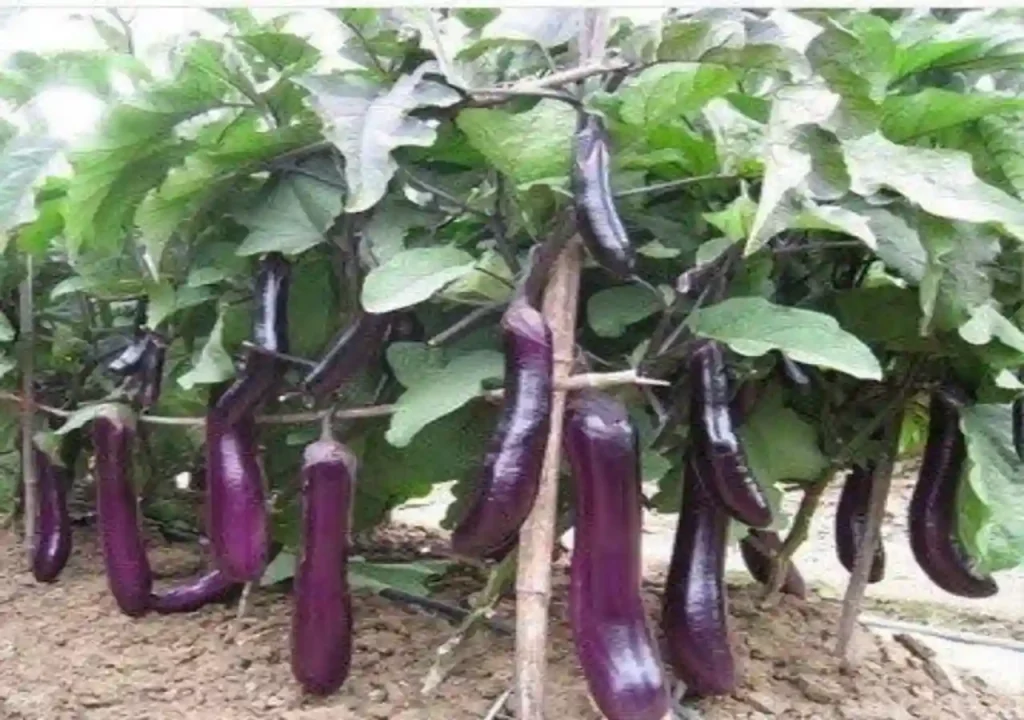
How to Cultivate brinjal plant (with Special Terms)
Brinjal has been cultivated in India since ancient times and is also known as the “King of Vegetables.” Cultivating it properly yields both good yields and profits. Let’s know how to cultivate brinjal plant.
- Soil Selection
Loamy, sandy loam, or well-drained soil is considered best for eggplant cultivation. A soil pH between 5.5 and 6.8 yields excellent yields. - Climate Requirements
Eggplant is a tropical crop. It prefers hot and humid climates. Cold winds or frost can harm the plants. - Seed Preparation
Before sowing, seeds should be treated with lukewarm water or an organic treatment (Trichoderma, cow urine). This reduces diseases and improves germination. - Nursery Management
Seeds are first sown in the nursery. After 25–30 days, when the seedlings have 4–5 leaves, they should be transplanted into the field. - Field Preparation
Deeply plow the field and add cow dung manure or vermicompost. Make beds and plant the seedlings at a distance of 60 x 45 cm. - Irrigation Management
The first irrigation should be done immediately after transplanting. Thereafter, regular irrigation should be done at intervals of 7–10 days. Drip irrigation is more beneficial. - Nutrition Management
Using organic manure, neem cake, and liquid organic solutions (Jeevamrit, Panchagavya) keeps the soil fertile and disease-free. - Disease and Pest Control Spray neem oil to protect against shoot borers, mites, and aphids. Trichoderma or Castor solution is useful for preventing fungal diseases.
- Harvesting
Fruits should be harvested when they are bright, fresh, and of the right size. Delaying harvesting reduces their flavor and market value. - Production and Profit
With advanced technology, a yield of 250–350 quintals per hectare is possible. This can provide a good income to the farmer.
History of brinjal
India is called the birthplace of brinjal, as it originated here and later spread to China, Arab countries, and Europe through trade and cultural exchange. In ancient times, it was also known as the food of the poor because it was easy to grow and filling.
In the medieval era, eggplant held a special place in royal kitchens. And during the Mughal period its dishes reached the court. Over time, brinjal evolved into various varieties long, round, purple, white, and striped.
In Ayurveda, brinjal is described as nutritious, slightly warm, and aids digestion. This is why it remains a favorite in both rural and urban kitchens. Today, eggplant is recognized worldwide as a popular vegetable, deeply rooted in Indian history and culture.
Side effects of brinjal
Brinjal is a popular vegetable known for its flavor and nutrition, but it also has some side effects. The chemical compounds and properties present in it affect the body in different ways. Some individuals may experience allergic reactions after eating eggplant, including itching, rashes, or redness of the skin. This vegetable is considered hot in nature, so excessive consumption can aggravate stomach irritation, ulcers, or heat-related problems.
For those suffering from arthritis or joint pain, consuming eggplant can worsen joint pain. Furthermore, the oxalates present in eggplant can reduce the body’s absorption of iron and calcium, leading to anemia or weakness. Excessive consumption of eggplant is not advisable for pregnant women, as it can adversely affect the fetus. Therefore, despite its delicious flavor, eggplant is beneficial only in limited quantities.
Ans. Botanically, brinjal develops from a flower and contains seeds, so it is classified as a fruit.
Ans. In food traditions and culinary uses, it is eaten cooked, so it is called a vegetable.
Ans. It is considered a digestive aid, heart-healthy, and helps with weight management.
Ans. People with arthritis, pregnant women, and those with allergies should avoid excessive consumption.
Ans. It is rich in fiber, vitamin C, vitamin K, potassium, magnesium, and antioxidants.

